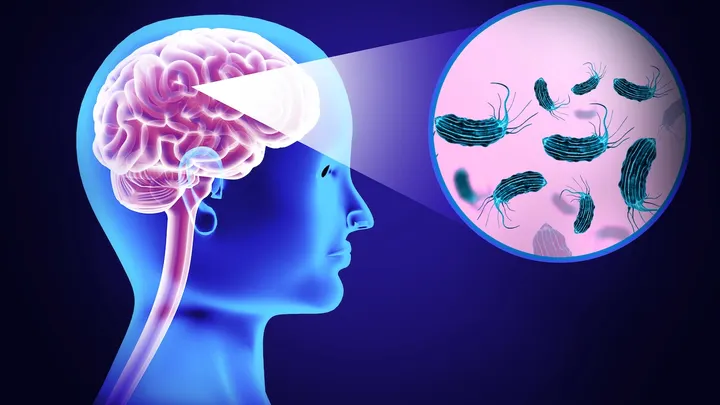Introduction
A tragic incident has brought renewed attention to a rare but deadly microorganism known as the brain-eating amoeba. A woman recently died after contracting this fatal infection linked to the use of tap water in her nasal rinse device. This heartbreaking case has raised alarms among health officials and the public, underscoring the importance of understanding how the brain-eating amoeba infects humans and how to prevent such infections. In this article, we explore the details of the case, what the brain-eating amoeba is, and practical steps you can take to protect yourself.
What Happened? A Tragic Case Overview
The Incident
The woman, whose identity has been withheld for privacy, fell seriously ill after using a nasal irrigation device with unsterilized tap water. After showing severe neurological symptoms, she was hospitalized and eventually succumbed to the infection. Health officials conducted an investigation and confirmed that the source of her illness was the brain-eating amoeba found in the tap water used during her nasal rinse.
Link to Tap Water
Medical experts stress that the brain-eating amoeba does not infect people through drinking water but through water entering the nasal passages. The investigation highlighted that using untreated tap water in nasal rinses creates a direct path for the amoeba to enter the brain, causing deadly infections. Authorities have since issued warnings to avoid tap water for nasal irrigation.
What Is a Brain-Eating Amoeba?
Meet Naegleria fowleri
The brain-eating amoeba, scientifically known as Naegleria fowleri, is a microscopic organism commonly found in warm freshwater bodies such as lakes, rivers, and hot springs, as well as in soil and inadequately treated water systems. Though rare, this amoeba can cause a devastating brain infection when it enters the body through the nose.
How It Infects Humans
Infection occurs when contaminated water containing the brain-eating amoeba enters the nasal passages, typically during activities like swimming or using nasal rinse devices with unsafe water. From the nose, the amoeba travels to the brain, causing Primary Amoebic Meningoencephalitis (PAM)—a rapid and often fatal inflammation of the brain. Symptoms usually appear within days and progress quickly, making early diagnosis challenging.
Brain-Eating Amoeba Risks and Statistics
How Common Are Infections?
While infections caused by the brain-eating amoeba are extremely rare, they are almost always fatal. The Centers for Disease Control and Prevention (CDC) reports only a handful of cases annually in the United States, but these cases attract significant attention due to the severity of the illness.
Common Risk Factors
Risk factors include swimming in warm freshwater during hot months and using unsterilized water for nasal irrigation or neti pots. The recent tragic case emphasizes that even routine health practices like nasal rinsing can pose risks if proper water safety guidelines are not followed.
Using Nasal Rinse Devices Safely
Safe Water Guidelines
To avoid exposure to the brain-eating amoeba, it is critical to use only distilled, sterile, or previously boiled water for nasal rinses. Tap water should never be used unless it has been boiled for at least one minute and cooled. The CDC provides clear recommendations on this to prevent infections.
Proper Cleaning of Devices
In addition to using safe water, nasal rinse devices must be cleaned thoroughly and dried after each use. Reusing contaminated water or neglecting device hygiene can increase the risk of infection with the brain-eating amoeba.
Signs and Symptoms of Infection
Early Warning Signs
Initial symptoms of brain-eating amoeba infection often mimic those of bacterial meningitis and include headache, fever, nausea, and nasal congestion. These symptoms typically develop within 1 to 12 days following exposure.
When to Seek Emergency Care
As the infection progresses, neurological symptoms such as confusion, seizures, and loss of consciousness appear rapidly. Immediate medical attention is essential, though treatment outcomes remain poor due to the aggressive nature of PAM.
Prevention and Public Health Response
What Health Officials Are Doing
In response to cases like this, health departments have increased public advisories and water testing efforts. Educational campaigns are underway to raise awareness about the risks of brain-eating amoeba and safe practices for water use.
What You Can Do
Individuals should ensure they follow water safety guidelines for nasal irrigation, stay informed about local water quality alerts, and maintain proper hygiene of nasal rinse devices. Awareness is the best defense against this rare but deadly threat.
Conclusion: Tragedy Underscores the Need for Awareness
The death of this woman serves as a sobering reminder of the dangers posed by the brain-eating amoeba, particularly when simple safety precautions are overlooked. Although infections are rare, their severity demands vigilance. By using only safe water and practicing proper device hygiene, we can significantly reduce the risk of this fatal infection and protect ourselves and our loved ones.
Don’t Miss Out! Get the Latest News, Tips, and Updates from Us!
